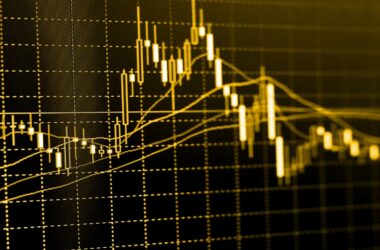Agricultural commodities are the raw materials produced by agriculture, such as grains, livestock, and sugar. They are essential for human survival and economic activity, and their prices can be affected by a variety of factors, including weather, supply and demand, and government policies. Investing in agricultural commodities can be a way to diversify your portfolio and potentially generate long-term returns. However, it is important to understand the risks involved, as agricultural commodity prices can be volatile.
There are a few different ways to invest in agricultural commodities. One way is to buy the commodities directly, such as through a futures contract or an options contract. This can be a risky way to invest, as you are directly exposed to the price movements of the commodity.
Another way to invest in agricultural commodities is through exchange-traded funds (ETFs) or mutual funds. These funds invest in a basket of agricultural commodities, which can help reduce your risk.

Here are some of the pros and cons of investing in agricultural commodities
Investing in these commodities can offer both advantages and drawbacks for investors. It’s essential to evaluate these factors before venturing into this asset class. Here are some of the key considerations:
Pros:
- Diversification: Agricultural commodities can significantly enhance the diversification of your investment portfolio. They often display a low correlation with traditional asset classes like stocks and bonds. This means that when the values of stocks and bonds may be declining, these commodities may hold their value or even appreciate, serving as a valuable hedge against portfolio losses.
- Potential for High Returns: Over the long term, agricultural commodities have the potential to deliver attractive returns. It’s worth noting that while long-term returns can be high, they are often accompanied by short-term price volatility. This means investors should be prepared for market fluctuations.
- Inflation Hedge: Agricultural commodities can serve as a reliable hedge against inflation. When inflation rates rise, the prices of these commodities tend to increase as well. As a result, investing in these commodities can protect the purchasing power of your investments in times of high inflation.
Cons:
- Volatility: Agricultural commodity prices are particularly sensitive to various factors, including weather conditions, supply and demand dynamics, and geopolitical influences. This volatility can result in sharp price swings, making investments in this sector risky for those who are not prepared to handle short-term fluctuations.
- Illiquidity: Some agricultural commodities can be illiquid, which means they may not be readily tradable. This lack of liquidity can make it challenging to buy or sell these assets quickly, potentially leading to liquidity-related issues for investors who require immediate access to their capital.
- Storage Costs: When you own physical agricultural commodities, you will likely need to account for storage costs. These costs can include expenses for warehousing, insurance, and security. Such expenses should be factored into your investment strategy, as they can erode potential profits.
Investment Tips for Agricultural Commodities
- Diversify Your Portfolio: Avoid putting all your resources into a single agricultural commodity. Instead, diversify your investments across various agricultural commodities and other asset classes to spread risk and enhance your portfolio’s stability.
- Use Stop-Loss Orders: Implement stop-loss orders to protect your investments. These orders automatically trigger a sale if the commodity’s price falls below a predefined threshold. This proactive approach can help safeguard your profits and limit potential losses.
- Maintain a Long-Term Perspective: Given the short-term volatility in agricultural commodity prices, it’s essential to adopt a long-term investment horizon. This approach allows you to ride out market fluctuations and potentially capitalize on the long-term appreciation of these assets.
Investing in these commodities can be an effective means of diversifying your portfolio and seeking long-term returns. However, it is imperative to understand the associated risks, including price volatility and illiquidity. By conducting thorough research and crafting a well-informed investment strategy tailored to your goals and risk tolerance, you can harness the potential of agricultural commodities while managing the inherent challenges of this asset class.
How to Choose Agricultural Commodities to Invest In
Investing in agricultural commodities offers a broad spectrum of choices, each with its own unique characteristics and factors to consider. When selecting the right agricultural commodities for your investment portfolio, it’s essential to weigh various elements. Here are some of the most popular agricultural commodities and factors to consider:

Popular Agricultural Commodities
Grains: Grains such as corn, wheat, soybeans, and rice are among the most favored agricultural commodities. These commodities play a critical role in both human consumption and animal feed. Their prices can fluctuate due to a multitude of factors, including weather conditions, supply and demand dynamics, and government policies.
Livestock: Beef, pork, and poultry represent the primary choices within the livestock category. The prices of livestock commodities can be influenced by factors like feed costs, consumer demand for meat products, and the occurrence of disease outbreaks.
Sugar: Sugar, a widely used sweetener in various food and beverage products, is another agricultural commodity with investment potential. Its prices are sensitive to factors including weather events, supply and demand fluctuations, and government policies.
Investing in Agricultural Commodities Through ETFs and Mutual Funds
Exchange-traded funds (ETFs) and mutual funds offer a convenient pathway to gain exposure to a diversified basket of agricultural commodities. This approach can reduce your risk and simplify your investment process. When selecting an ETF or mutual fund for agricultural commodities, consider these critical factors:
Expense Ratio: The expense ratio represents the portion of your investment that covers the costs of operating the ETF or mutual fund. Lower expense ratios are preferable, as they can minimize the impact on your returns over time.
Tracking Error: The tracking error measures the difference between the performance of the ETF or mutual fund and the index it aims to replicate. A lower tracking error indicates that the fund closely follows its benchmark index, offering a more accurate representation of commodity performance.
Asset Allocation: The asset allocation of an ETF or mutual fund determines the exposure it provides to various agricultural commodities. It’s crucial to choose a fund with an asset allocation that aligns with your investment objectives and risk tolerance, ensuring it meets your desired level of exposure to specific commodities.
Conclusion
Investing in agricultural commodities can be a way to diversify your portfolio and potentially generate long-term returns. However, it is important to understand the risks involved, as agricultural commodities prices can be volatile.
If you are considering investing in agricultural commodities, it is important to do your research and understand the risks involved. You should also consider your investment goals and time horizon before making any investment decisions.





